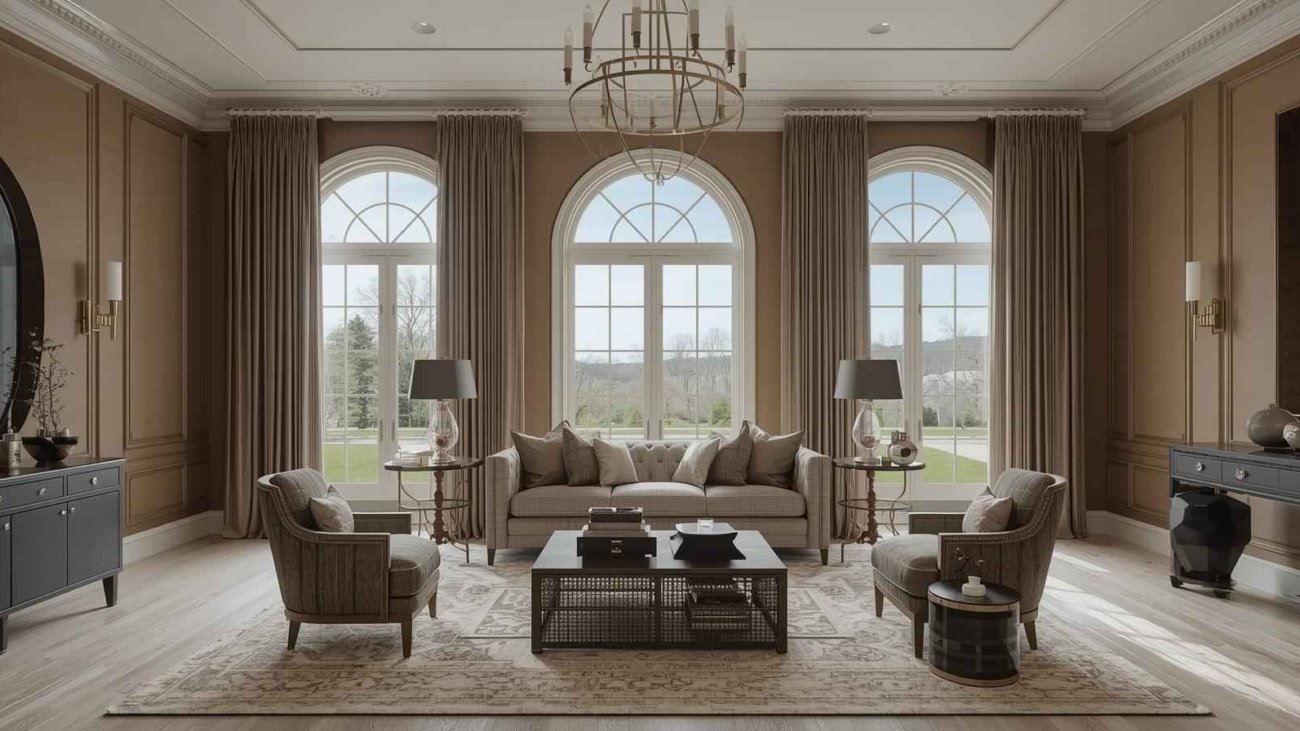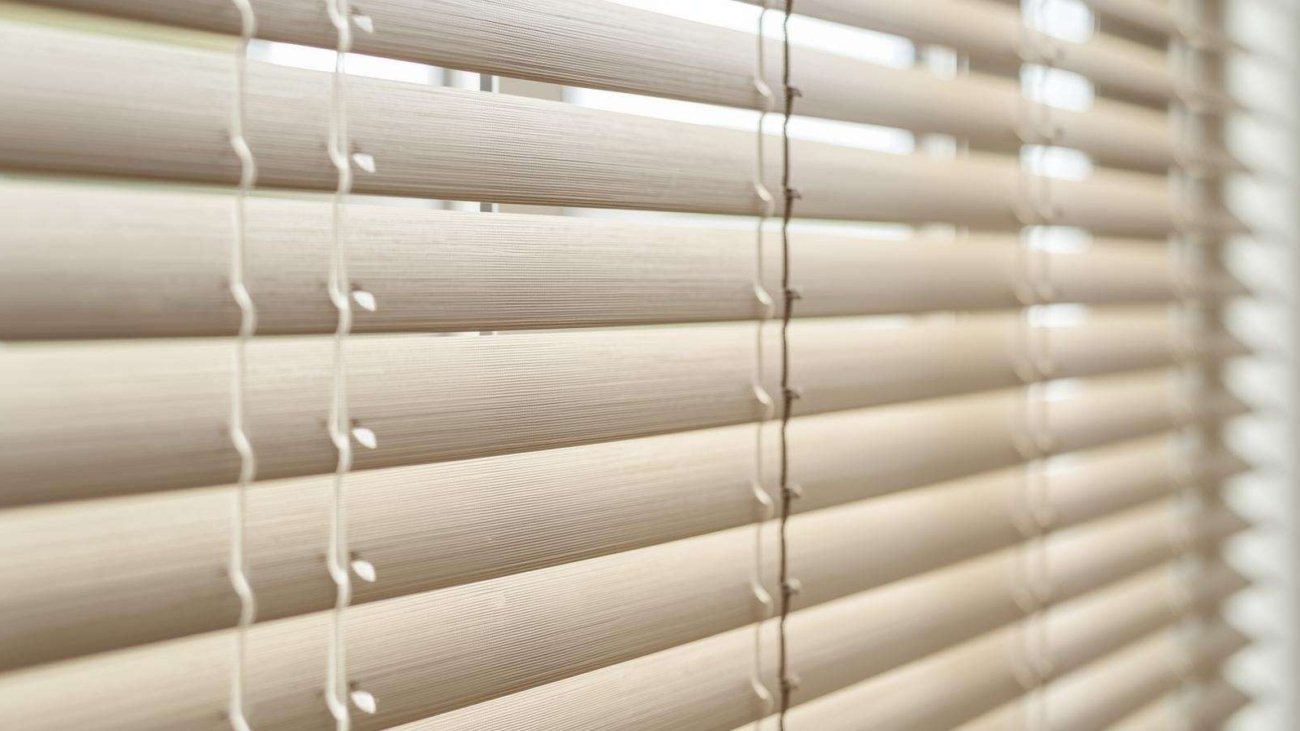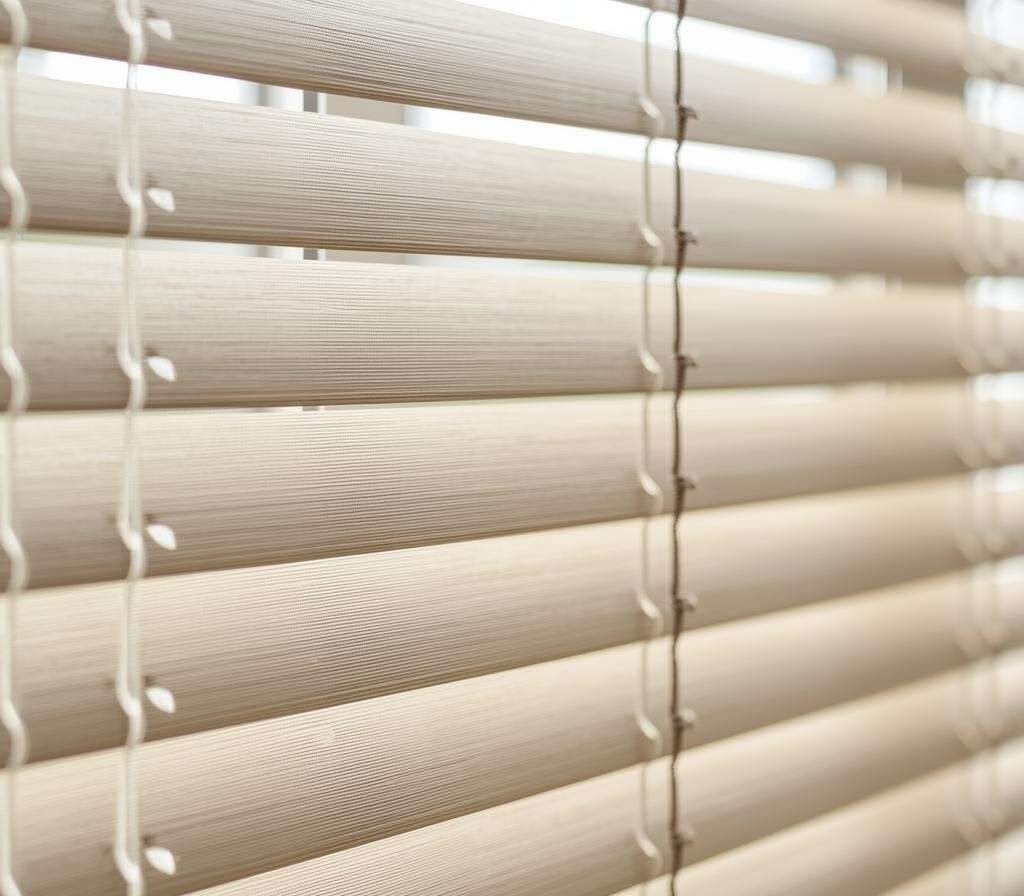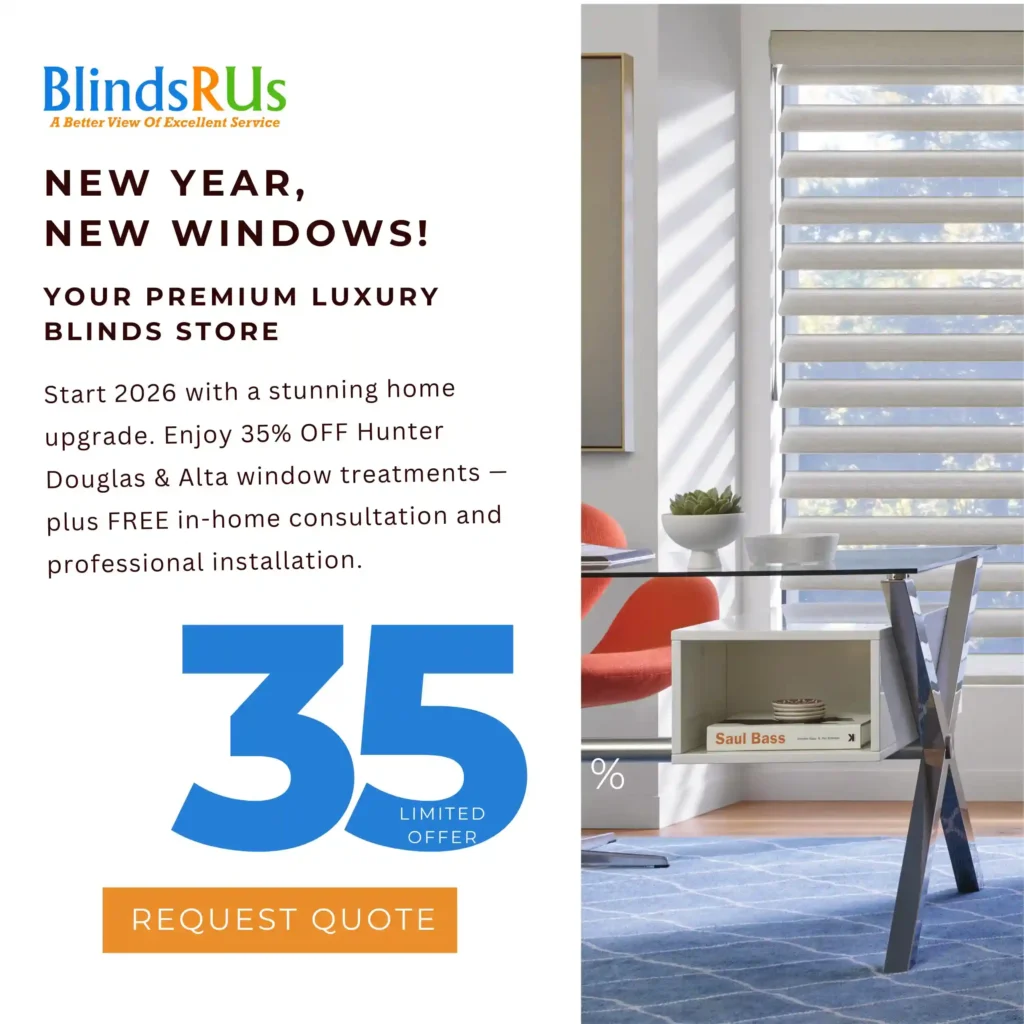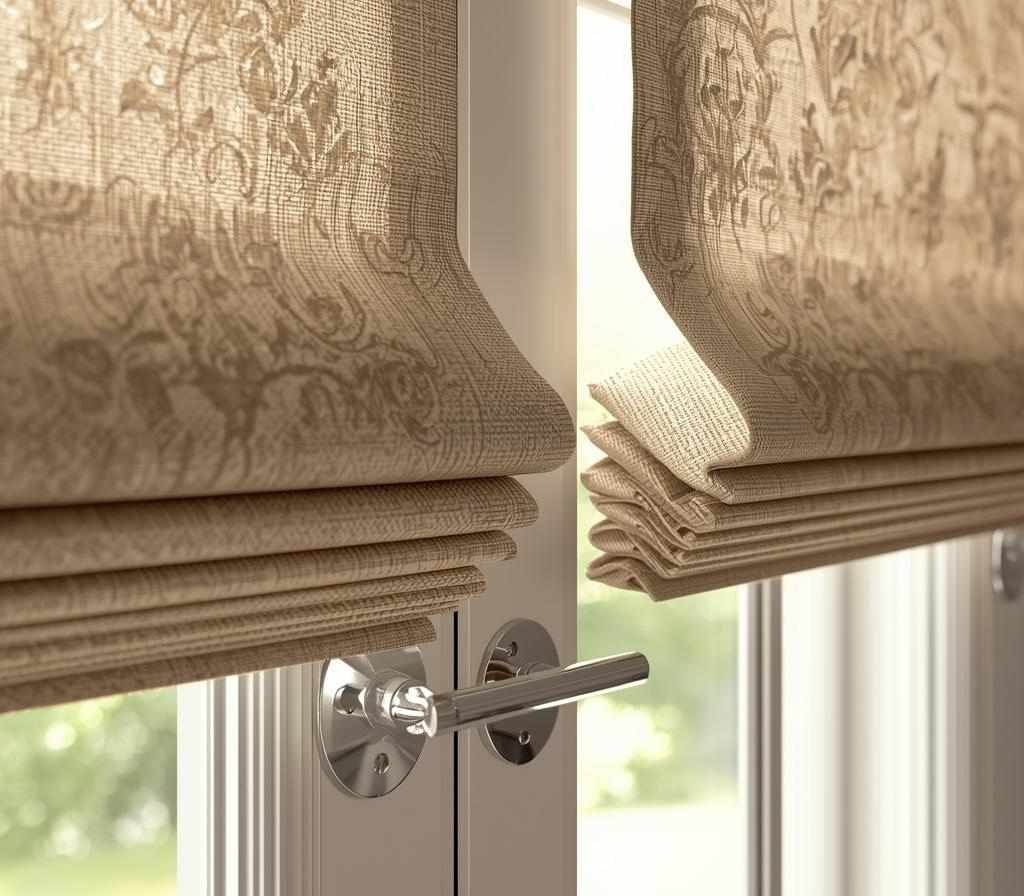
Large windows are a dream until you’re standing in your living room at sunset, squinting at your TV, or waking up at 5 a.m. because the sun decided your bedroom needed a wake-up call. Big windows flood rooms with light and views, but they also need coverings that can handle their size without looking awkward or costing a fortune. The trick is finding solutions that control light, add style, and don’t sag, break, or look like you just threw up some bedsheets. When you get it right, those massive windows become the best feature in your home instead of a daily headache.
The biggest mistake people make with oversized windows is treating them like regular ones but bigger. That doesn’t work. Large expanses of glass need specialized hardware that can support weight, treatments that operate smoothly despite their size, and designs that complement the scale without overwhelming the room. Let’s look at what actually works.
Motorized Solutions That Handle the Heavy Lifting
If your windows are taller than you can comfortably reach or wider than your arm span, motorized treatments aren’t just convenient, they’re kind of necessary. Trying to raise and lower a 10-foot shade by hand gets old fast, and the cords or chains can be a tangled nightmare. Motorized roller shades, cellular shades, or even drapes glide up and down with a remote, phone app, or wall switch. They’re especially great for windows above staircases, two-story walls, or any spot where a ladder would be your only option. The motors handle the weight evenly so nothing sags or hangs crooked. You can program them to open at sunrise and close at sunset, or sync them with your smart home system. Yeah, they cost more upfront, but if you’re dealing with seriously large windows, they’re worth every penny for the convenience alone.
Not sure what will work for your specific space? Talk to a window treatment consultant who can measure your windows and recommend the best window treatments that fit both your budget and how you actually live.
Layering for Flexibility and Drama
One treatment rarely does everything you need on a big window. Layering gives you options. Start with something functional like solar shades or sheers that filter light and reduce glare during the day. Then add drapes or panels on the outside for privacy, insulation, and that finished designer look. The sheers stay closed most of the time while the drapes can be pulled back to frame the window or closed at night for full coverage. This combo works especially well in living rooms where you want flexibility throughout the day. Vertical panels or sliding tracks are another layering option that looks super clean and modern. They stack to one side when open and slide across for coverage. You can even use different opacities, putting a light-filtering panel behind a blackout one so you control exactly how much light comes through.
Choosing the Right Hardware
Your brackets, rods, and tracks need to support serious weight without bowing or pulling away from the wall. Look for commercial-grade hardware rated for the size and weight of your treatment. Center support brackets prevent sagging on wide spans. For really massive windows, consider a track system instead of a traditional rod because tracks distribute weight more evenly and operate more smoothly.
Need installation expertise? A professional window treatment installation service ensures your hardware is properly anchored and rated for your window size, so everything operates safely and looks perfect.
Style Ideas That Actually Work at Scale
Big windows can handle bold choices that would overwhelm smaller ones. Floor-to-ceiling drapes in a rich color or interesting texture make a serious statement. Oversized roman shades bring structure and sophistication. Vertical wood blinds add warmth and work great on sliding glass doors or wall-sized windows. Whatever you pick, make sure it’s proportional. Tiny patterns or skinny panels look lost on huge windows. Go bigger and bolder than you think you should. Wide vertical stripes, large-scale prints, or solid saturated colors all work beautifully. Keep the lines clean though. Too much fussiness, ruffles, or complicated details can make large treatments look heavy and dated.
Some practical style tips:
- Mount high and wide – Hang treatments several inches above and beyond the window frame to maximize the visual impact
- Consider the view – If your window overlooks something amazing, choose treatments that stack completely clear when open
- Match your architecture – Modern homes look great with clean panels or roller shades; traditional spaces can handle more decorative options
- Think about scale – The width of your panels or slats should be proportional to the window size
Want a cohesive look throughout your home? Explore custom blinds, custom blinds Westchester County New York, and quality window treatments & hardware designed specifically for challenging window sizes.
Practical Considerations You Can’t Ignore
Large window treatments are heavier, harder to install, and more expensive than standard sizes. Budget accordingly. If cost is a concern, focus on the main living areas first and do bedrooms later. Consider energy efficiency too. Cellular shades or insulated drapes on big windows can seriously cut your heating and cooling costs because that’s where you lose the most energy. Safety matters as well. Cordless or motorized options are safest, especially if you have kids or pets. And think about cleaning. Treatments on massive windows collect dust but are harder to take down and wash. Look for materials that can be vacuumed with an upholstery attachment or wiped down in place.
Ready to tackle those oversized windows? Combine smart design with the best window treatment solutions, get expert advice on what are window treatments that suit your specific challenges, and consider healthy window blinds that improve your home’s comfort and air quality. Those big beautiful windows deserve coverings that work as hard as they look good.
Frequently Asked Questions
What’s the best treatment for floor-to-ceiling windows?
Motorized roller shades or vertical panel tracks work best because they handle the height smoothly and won’t sag or become difficult to operate over time.
How do you keep large curtains from looking droopy?
Use commercial-grade rods with center support brackets, and make sure the hardware is rated for the weight. Quality fabric and proper lining also help maintain structure.
Can you use regular blinds on oversized windows?
Standard blinds often max out around 96 inches wide. Beyond that, you’ll need custom solutions or multiple panels that operate together for a cohesive look.
Do motorized shades work during power outages?
Most have battery backup systems that let you operate them manually during outages, though the automatic features obviously won’t work without power.
What’s the most budget-friendly option for large windows?
Simple roller shades or panel curtains on basic hardware offer good coverage without breaking the bank, though you’ll sacrifice some of the premium features.


